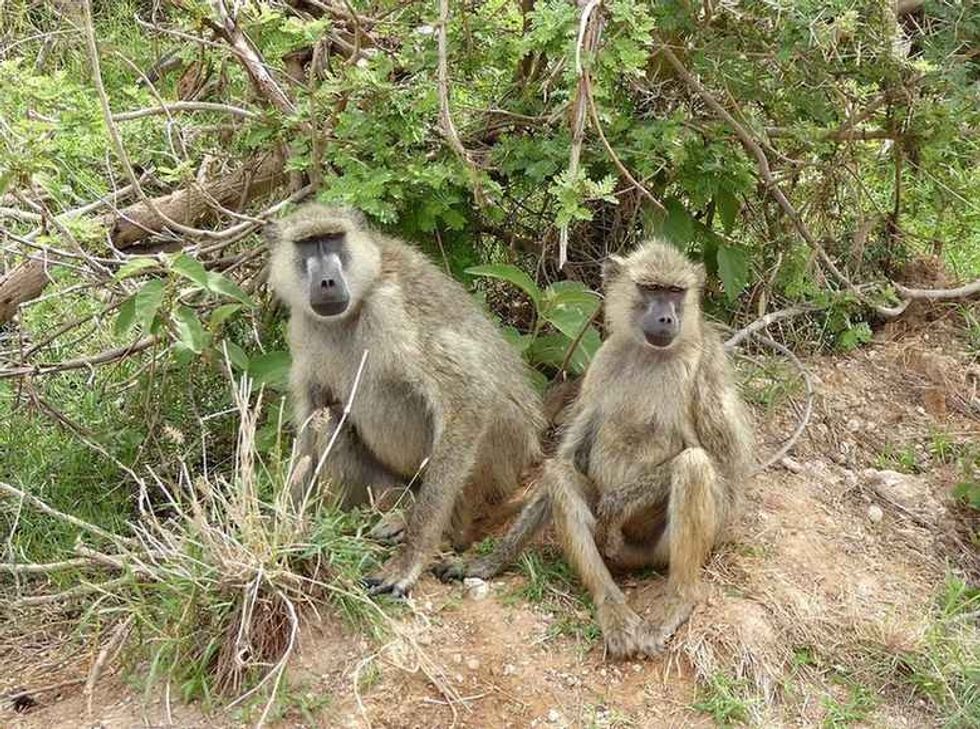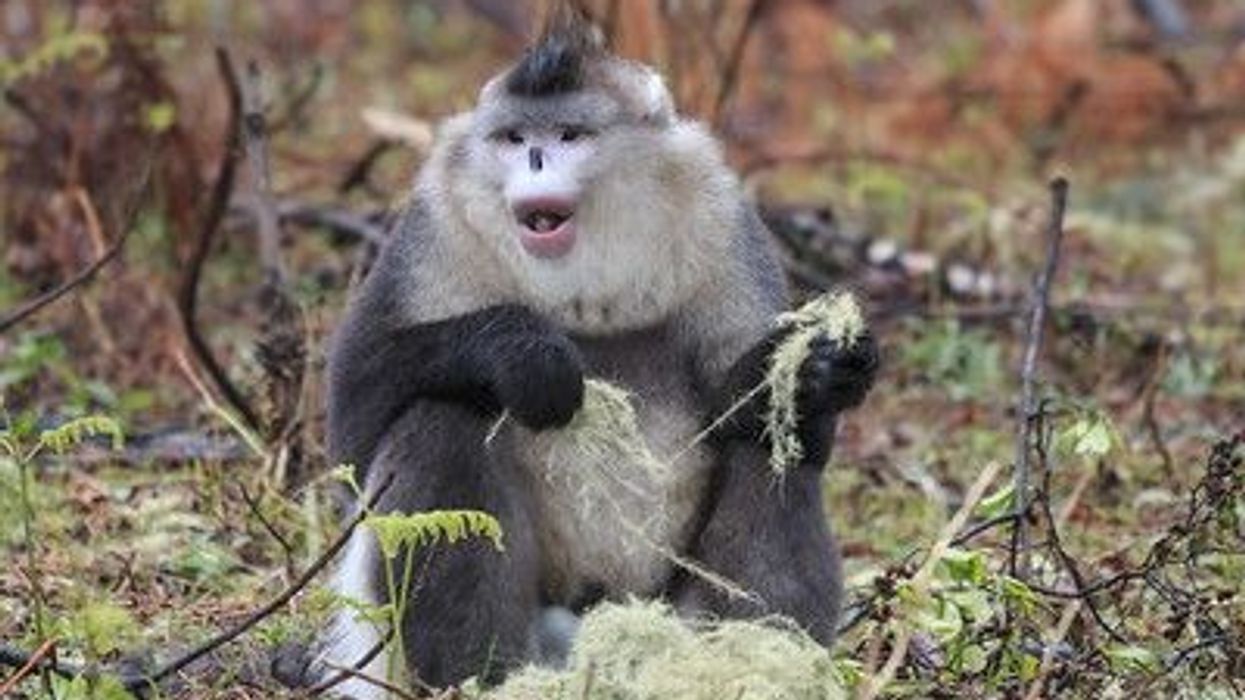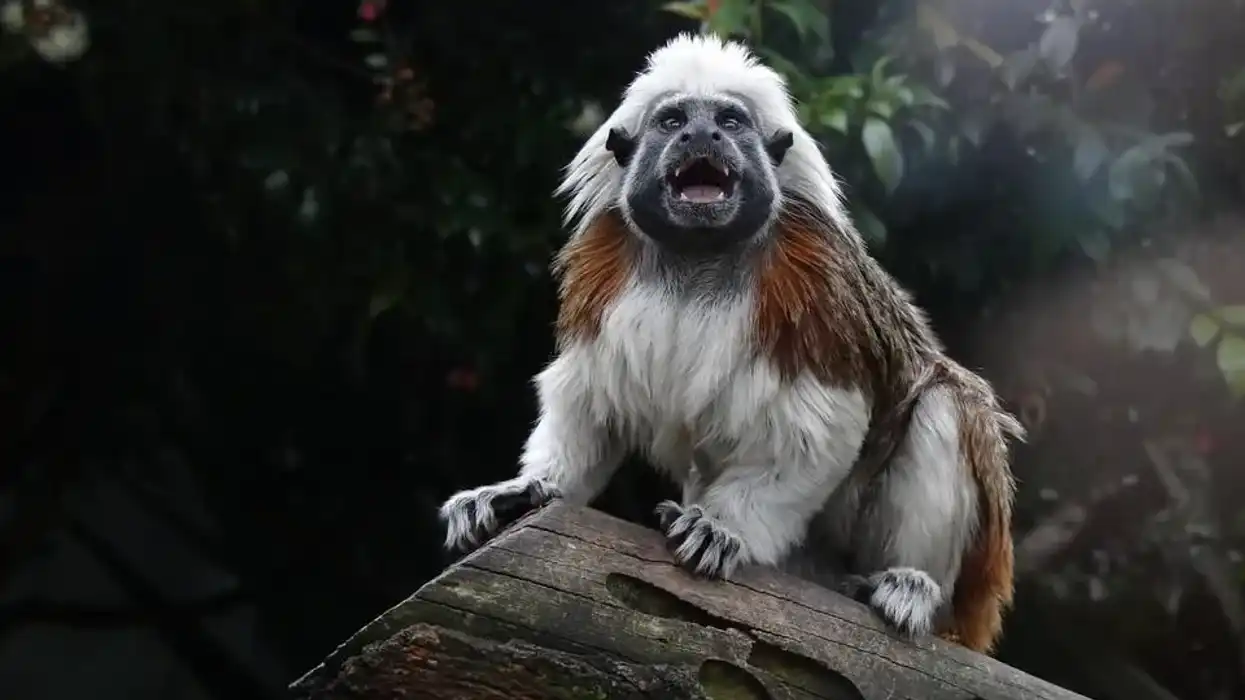Have you ever wondered why someone naughty is often compared to or called a monkey? Why not when they are almost your primate cousins?
Well, if you are still not persuaded, here we provide you with enough proof that will convince you to accept by the end that the correlation is apt. The Yellow Baboon will help you in understanding this comparison.
The Yellow Baboon, Papio cynocephalus, is a species of the Cercopithecidae family. The scientific name is a merger of the Greek word ‘kynos’ (dog) and ‘kephalikos’ (head) which means ‘dog-head’. The Papio species are endemic to the central and eastern counties of Africa.
At puberty, young males usually depart from their native pack. The Yellow baboons might look similar to olive baboons but are different species.
These animals live in large troops. They have ecological importance as their decay contains undigested seeds, thus improving soil aeration, and they eat a few species keeping their population in check. These animals are also essential for medical research.
If the above content increased your curiosity about the species, keep reading for more fun facts about this population of monkeys. We also have engaging content on other monkeys like woolly monkeys and Patas monkeys.
Yellow Baboon Interesting Facts
What type of animal is a Yellow Baboon?
The Yellow baboon, Papio cynocephalus, is one of the primate species. A Baboon is an old-world monkey.
What class of animal does a Yellow Baboon belong to?
The members of the Cercopithecidae family belong to the class of mammals.
How many Yellow Baboons are there in the world?
The Papio cynocephalus is widespread in their captivity; hence their population is concentrated. They can adjust to a range of habitats and sustain habitat loss. The Yellow Baboon is known to be one of the most successful African primates; this species is not endangered.
Where does a Yellow Baboon live?
These Yellow baboons are endemic to countries Ethiopia, Kenya, Malawi, Mozambique, Somalia, Tanzania, and Zambia of Africa.
What is a Yellow Baboon's habitat?
It is evident from their lifestyle that the habitat cannot control the existence of these species, as these ground-dwelling species have a variety of diet options. Being an omnivore, the Yellow Baboon can adapt to a range of habitats.
It can inhabit grasslands, shrublands, savannas, scrublands, woodlands, and wet forests. During the day, they are busy, and at night, they sleep. They climb trees and sleep, which are their sleeping grooves.
Who do Yellow Baboons live with?
They are an extremely social race. The baboons live, sleep, eat, and travel in groups. The number of Cynocephalus animals in a troop can range from 20-180 members.
The baboons' social structure comprises dominant males, emigrate males, and resident females with their infants. These hold traditional hierarchies, where both males and females form a definite dominance hierarchy. As a result, the highest-ranking members claim access to a significant amount of the group's valuable resources, such as food and mating opportunities.
Other than this, friendships between male and female yellow animals intensify male yellow baboons' chances to mate. This courtship also creates convenience to share food, groom, and associating with particular females and their offspring.
How long does a Yellow Baboon live?
The life span of the Papio cynocephalus primates on average is recorded to be 15-20 years in the wild, with the highest life span being 30.
How do they reproduce?
The social structure and reproduction are analogous to each other in these primates' lives. There is no specific breeding season as mating and birth occur throughout the year.
The competition gets very vicious and furious as one male can mate with any female. The larger, younger, and stronger male usually comes first. The male who wins the league gets sexual access to the desired female consort.
In Yellow baboons, the females reach sexual maturity at five years of age and can deliver for the first time by six. The male attains puberty between ages four to seven. Females have a menstrual cycle of three days and an estrous cycle of 32 days.
During mating, the females present the licensed male with their reproductive parts. The coupling frequency is one to six times per hour.
The females are likely to reproduce every other year. The gestation period lasts about 180 days. And the female mostly delivers a single offspring.
The mother plays a pivotal role in nursing, grooming, and engaging the infant. Infants are a focal point for plenty of attention and care. Low-ranking females in the troop are more anxious about their infants and fear predators than those of higher order.
What is their conservation status?
Yellow baboons are listed as Least Concern by the International Union for Conservation of Nature as their populations are widespread. But gradually, as the forest habitat is transformed into agricultural lands, their population can be affected, as the human population considers them pests and kills them.
Yellow Baboon Fun Facts
What do Yellow Baboons look like?
The Yellow baboons are small-sized. They have sharp canine teeth, powerful jaws, thick fur, and a dog-like nose. The adult males of the Papio genus have an extended layer of hair around the neck called a ruff.
The Yellow baboon is appropriately designated for the yellow-brown fur covering the monkey's body. The Yellow baboons have significantly narrow, T-like-shaped, and dark-colored faces. They have an outstanding furry brow ridge with a pair of closely set round eyes, below which juts out their long muzzle.
Their lips are wide. They have thin ears that slightly protrude from the thick fur on either side of the head.
The Yellow baboons have quadruple long and narrow limbs, and their long tail is curved upwards, hanging away from the Yellow baboons' body. The weight, height, and length of these Yellow baboons are gender-specific. The Yellow infant baboons have a black natal coat.

How cute are they?
The Yellow baboons demand human attention with their interesting social behavior and being a primate. Their small yet defining body anatomy with fascinating details of the face are captivating.
How do they communicate?
Communication plays an important role for these Yellow social baboons, which live in large troops. They use more than 10 ways of communication and behavior in their captivity.
They use vocalizations, like grunting, barking, screeching, and yakking to indicate threat from predators, thus protecting themselves.
Visual signals, like staring, eyebrow-raising, canine tooth display, tension yawn, and tooth grinding exhibit aggression against competitors, and reproductive presenting while mating.
Auditory behavior includes lip-smacking to display reconciling or friendly gestures.
Tactile communication involves social grooming to establish social bonds and cleansing fur from parasites and debris.
How big is a Yellow Baboon?
The length and weight of the adult animal Cynocephalus are usually half that of a Chacma baboon. It is a small-sized monkey. The length of the male baboon would be 47.6 in (121 cm), and that of a female is 24 in (60 cm).
How fast can a Yellow Baboon move?
Though the exact parameters of their speed are not known, the Yellow baboons travel an average distance of 3.6 mi (5.9 km) per day.
How much does a Yellow Baboon weigh?
The weight of these baboons is gender-specific as males are larger than females. The male yellow animal weighs around 55 lb (25 kg), whereas the female weighs around 24 lb (10.8 kg).
What are the male and female names of the species?
The male and female Yellow baboons are addressed as Yellow male baboons and female Yellow baboons.
What would you call a baby Yellow Baboon?
The Yellow baby baboon is addressed as an infant baboon.
What do they eat?
Being omnivores, these yellow monkeys are opportunistic eaters. They use their long muzzle to dig for roots.
They eat everything that comes their way in the wild, thus being portable vacuum cleaners. Their diet consists of birds, bird eggs, fruits, leaves, reptiles, ants, gums, vervet monkeys, roots, and tubers. Rotten wood and all edible parts of the fever trees also comprise their diet.
Are they aggressive?
These Papio animals display aggressive behavior, especially during the breeding season or when the emigrated male enters their territory. They can get aggressive if closely encountered by humans and can bite.
Would they make a good pet?
Their aggressive and kidnapping nature does not encourage the idea of having them as pets.
Did you know...
Yellow baboons live in a large population of multi-male, multi-female packs. There is a correspondence between males' dominance rank and coupling success. More vigorous, young, and larger males have a definite advantage, and to break the dominance chain—two weaker males ally to encounter dominant males.
Sometimes male baboons carry infants on their shoulders to avoid or escape a tiff.
The dominant males guard their female friends and their offspring during unfavorable encounters.
Nonetheless, males do not sustain these bonds for a longer time, so female affinity compiles the substantial and lasting Yellow baboon troop. Unlike males, female animals do not emigrate from their natal groups.
The Yellow baboons have 32 teeth.
What makes the Yellow Baboon unique?
The Yellow baboon's name indicates the coloration of the monkey. The overall body is coated with yellow hair, and it has a significant brow ridge. This makes the animal unique from other species in the Cercopithecidae family.
What are the 5 species of baboons?
The Olive baboon, Yellow baboon, Sacred baboon, Chacma baboon, and Guinea baboon are the baboon family's five species.
Here at Kidadl, we have carefully created lots of interesting family-friendly animal facts for everyone to discover! Learn more about some other mammals from our proboscis monkey interesting facts, and capuchin monkeys fun facts for kids pages.
You can even occupy yourself at home by coloring in one of our free printable yellow baboon coloring pages.









